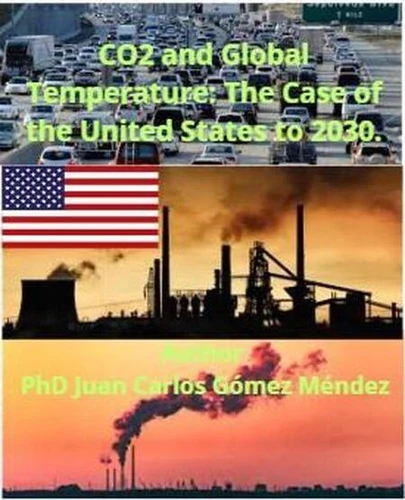CO2 and Global Temperature: The Case of the United States to 2030.. Research published in English, #10
Par :Formats :
Disponible dans votre compte client Decitre ou Furet du Nord dès validation de votre commande. Le format ePub est :
- Compatible avec une lecture sur My Vivlio (smartphone, tablette, ordinateur)
- Compatible avec une lecture sur liseuses Vivlio
- Pour les liseuses autres que Vivlio, vous devez utiliser le logiciel Adobe Digital Edition. Non compatible avec la lecture sur les liseuses Kindle, Remarkable et Sony
 , qui est-ce ?
, qui est-ce ?Notre partenaire de plateforme de lecture numérique où vous retrouverez l'ensemble de vos ebooks gratuitement
Pour en savoir plus sur nos ebooks, consultez notre aide en ligne ici
- FormatePub
- ISBN8227668158
- EAN9798227668158
- Date de parution20/08/2024
- Protection num.pas de protection
- Infos supplémentairesepub
- ÉditeurBig Dog Books, LLC
Résumé
Climate change is one of the greatest challenges facing humanity in the 21st century. Among the main culprits of this phenomenon is the United States, the world's second-largest emitter of carbon dioxide (CO2), after China. In 2021, it emitted 4, 752 megatons of CO2, representing 15% of global emissions. These emissions come mainly from the energy sector, transport, industry and agriculture. This research carried out a characterization of the variables CO2 emissions and vehicle fleet, a normality test was applied to the data using the analysis of Shapiro Wilk, a Pearson correlation test that resulted in a strong correlation of r=-0.89 Since the value of r is negative, it indicates a negative relationship between the variables, this is due to a slight downward trend in CO2 emissions in recent years and a constant increase in the vehicle fleet in the country; Using the least squares model, a projection of CO2 emissions in the United States from 2024 to 2030 was made.
The results indicate that, although a gradual reduction in emissions is expected, from 4, 530.6 Mt in 2024 to 4, 124.0 Mt in 2030, this rate of decrease is insufficient to achieve the global goals of limiting global warming to 1.5°C. The situation is further aggravated if one considers that in 2023 the global temperature already reached 1.48°C, which caused extreme heat waves, deaths and various climatic anomalies around the planet.
The results indicate that, although a gradual reduction in emissions is expected, from 4, 530.6 Mt in 2024 to 4, 124.0 Mt in 2030, this rate of decrease is insufficient to achieve the global goals of limiting global warming to 1.5°C. The situation is further aggravated if one considers that in 2023 the global temperature already reached 1.48°C, which caused extreme heat waves, deaths and various climatic anomalies around the planet.
Climate change is one of the greatest challenges facing humanity in the 21st century. Among the main culprits of this phenomenon is the United States, the world's second-largest emitter of carbon dioxide (CO2), after China. In 2021, it emitted 4, 752 megatons of CO2, representing 15% of global emissions. These emissions come mainly from the energy sector, transport, industry and agriculture. This research carried out a characterization of the variables CO2 emissions and vehicle fleet, a normality test was applied to the data using the analysis of Shapiro Wilk, a Pearson correlation test that resulted in a strong correlation of r=-0.89 Since the value of r is negative, it indicates a negative relationship between the variables, this is due to a slight downward trend in CO2 emissions in recent years and a constant increase in the vehicle fleet in the country; Using the least squares model, a projection of CO2 emissions in the United States from 2024 to 2030 was made.
The results indicate that, although a gradual reduction in emissions is expected, from 4, 530.6 Mt in 2024 to 4, 124.0 Mt in 2030, this rate of decrease is insufficient to achieve the global goals of limiting global warming to 1.5°C. The situation is further aggravated if one considers that in 2023 the global temperature already reached 1.48°C, which caused extreme heat waves, deaths and various climatic anomalies around the planet.
The results indicate that, although a gradual reduction in emissions is expected, from 4, 530.6 Mt in 2024 to 4, 124.0 Mt in 2030, this rate of decrease is insufficient to achieve the global goals of limiting global warming to 1.5°C. The situation is further aggravated if one considers that in 2023 the global temperature already reached 1.48°C, which caused extreme heat waves, deaths and various climatic anomalies around the planet.























